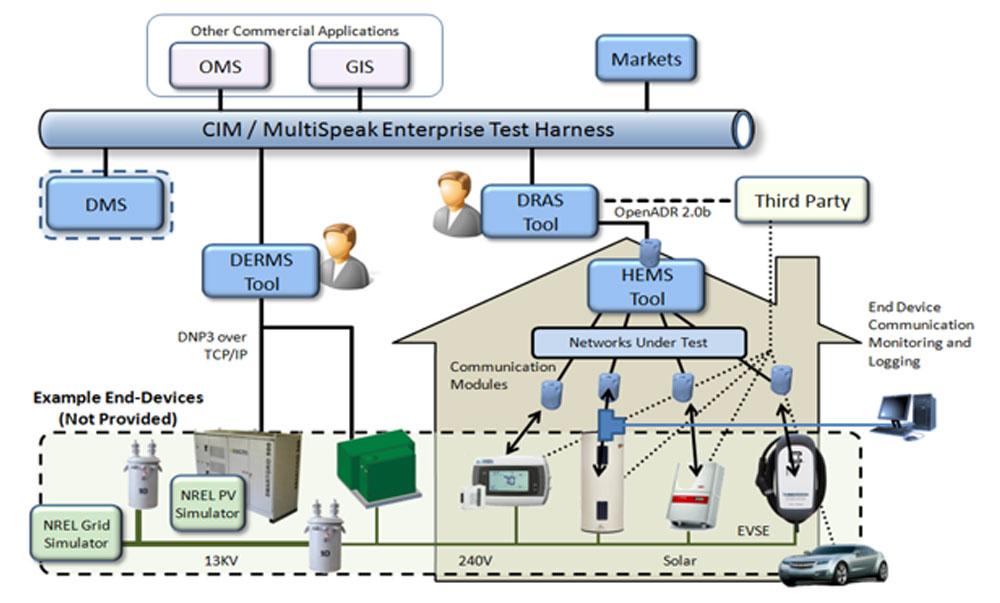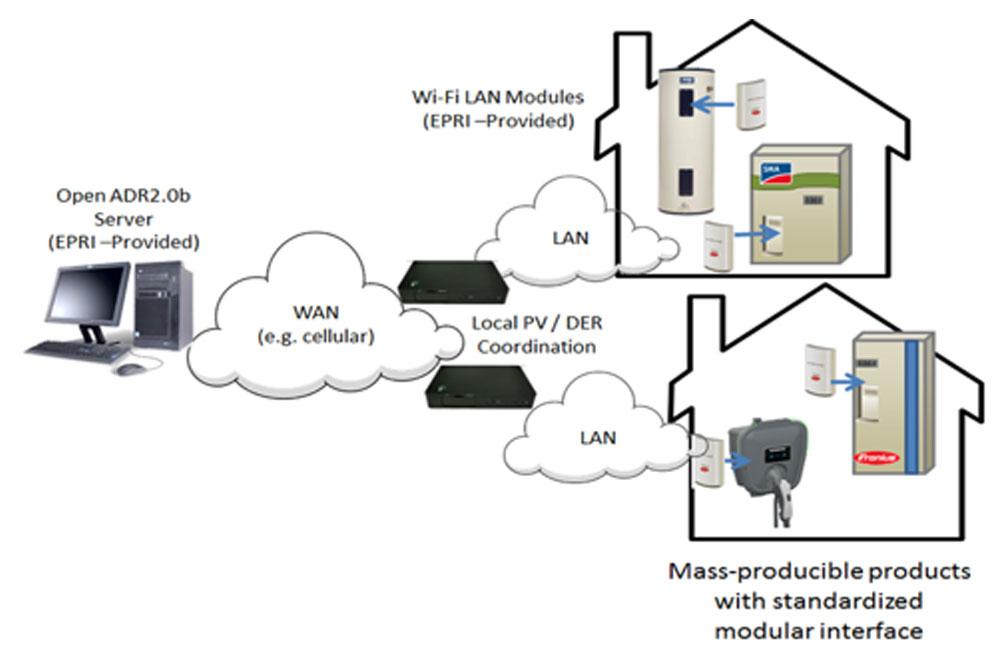We've solved the toughest IoT problems.
We know we can solve yours.
The engineers at Intwine have developed and implemented IoT systems that maximized the capability of electric power systems in deep-space, improved people's health by monitoring and reacting to indoor air quality in homes, reduced production losses from rotating machinery by condition based monitoring, and have coordinated power loads between renewable energy and the distribution system. In short, Intwine and its team have worked on and solved some of the world's toughest problems in various industries. Bring on your problem. We're ready for you.
In-home Electric Load Coordination and Control
INTEGRATE (DOE) is funded by the National Renewable Energy Laboratory (NREL) under the NREL RFP # RCS-4-42326, Topic Area 2. This project seeks to address specific grid integration challenges to enable clean energy technologies to be deployed at scale by providing grid services at the distribution and home level using open source, interoperable platforms. This project is a collaboration between Intwine Connect, the Electric Power Research Institute (EPRI), Case Western Reserve University, and many others to build a test system at the NREL test facility (ESIF) in Boulder, CO. Intwine Connect was selected to design and implement the Home Energy Management System (HEMS) and provide modules for connecting to and controlling high-load residential devices using the CEA-2045 specification.

As depicted in the figure above, the HEMS is responsible for coordinating the various devices in the home in order to provide services to the distribution grid. For this work, the main focus is on supplying demand response control actions based on OpenADR2.0b signals from the simulated utility in a manner that is consistent with direction from the "homeowner". The coordination will bemanaged through a software-agent based system using the VOLTTRON open-source framework. Key deliverables are a user interface to enable homeowner's to express their preference about how to respond to automated DR events, a HEMS capable of coordinating the operation of typical residential loads, and integration with utility level OpenADR2.0b signals.
California Microgrid
The State of California is funding the EPIC project (CA PON 14) with the objective of enabling high penetration of distributed solar photovoltaic systems. The team of Intwine Connect, EPRI, Pacific Gas and Electric, SMUD, UL, Clipper Creek, Emerson, Pentair, AO Smith, Fronius, SMA, and others are involved in this 2 year project which began in August of 2015. The key component of the proposed solution is the HEMS developed by Intwine Connect which is used to control load in the household to follow the power availability of the solar panels and to coordinate smart solar invertors installed on each array to prevent voltage and frequency instability.
The project includes a number of tests, starting at the Pacific Gas and Electric's ATS Laboratory which has three model homes, loads, and solar generation on a common feeder. The system will then be rolled out to a distribution feeder in the Southern California Edison footprint and another 8-10 homes in the Sacramento Municipal Utility District.

The key to the project is the Intwine ICG acting as HEMS for the homes on the common distribution transformer. The figure above illustrates how the HEMS will coordinate use within the home to match load to the PV output in a manner consistent with the homeowner's preferences and behavior patterns. The HEMS will also coordinate with other HEMS to ensure that the parallel solar invertors remain stable and do not negatively impact transformer life. To further minimize the negative impacts of reverse power flow due to excess solar availability, the HEMS will coordinate with neighboring systems to maximize the amount of load consumed behind the transformer.
Active Indoor Air Quality Management for at Risk Respiratory Patients
This project is in collaboration with the National Children's Study (NCS), Housing and Urban Development (HUD), Case Western Reserve University, University Hospital System, and the Veteran's Administration. It is a project to monitor and react to indoor air quality and other associated parameters such as temperature, humidity, HVAC status, etc. The objective is to improve patient health of those suffering from chronic obstructive pulmonary disease (COPD). COPD is the third leading cause of death in the U.S. and is a progressive disease that makes it difficult for patients to breathe.
Intwine Connect developed hardware, software, and services for this project to monitor indoor air quality through the Intwine Connect Gateway (ICG). Using the ICG, Intwine has been gathering air quality data from inside the homes of a group of veterans and patients at Louis Stokes Cleveland Department of Veterans Affairs Medical Center. This research includes measuring:
- Temperature
- Humidity
- Volatile organic compounds
- Nitrogen oxides
- Carbon monoxide
- Carbon dioxide
- Ozone
- Dust
By studying air quality and looking for correlations between the information and patient data, the company can prevent asthma attacks and breathing complications for at-risk patients.
Adding Connectivity to Cutting Edge Energy Harvesting Sensors
BENEFITS (DOE) is a project to design and demonstrate a low-cost, compact, easy-to-deploy, maintenance-free sensor node technology that can be commercialized into products to enable smart buildings. Researchers at Case Western Reserve University have integrated energy harvesting electronics into a temperature sensor and with the help of Intwine Connect, LLC., have added low-energy ZigBee communication to the sensor. The sensor reports on a periodic basis to the Intwine Connected Gateway (ICG) which acts as the hub for the sensor and sensor network. The ICG will enable the sensor data to be stored in a database and made accessible remotely via 4G internet connection. The second part of this project focuses on utilizing the ICG and sensor network to implement a commercialization plan by testing the system in a number of indoor settings and securing manufacturing partners. This 2 year project is funded by the US Department of Energy's Energy Efficicency & Renewable Energy group (award number DE-EE0006719).
